The Beginning
From garage bands to Rock Stars…
AEA was founded in the late 60’s with the goal of using advanced technology to help struggling garage bands who couldn’t afford good sound systems. We not only helped some of them become legendary rock stars, we went on to design mixing consoles used to record most of the top hits of the 70’s, and make ground breaking advances in high-end home audio gear.
It all started when AEA’s founder, Ken Leonard, was studying physics in graduate school at the University of Florida. Ken was trying to help the friend-of-a-friend who had a struggling garage band. They couldn’t get paying gigs because they didn’t have enough money for amps. Ken offered to build them a complete sound system, including mixer, amps and speakers, from scratch in his spare time… for the just cost of parts.
Ken had been interested in electronics since building his first audio amplifier at twelve with parts from old vacuum tube TV sets. He had recently taken an interest in the advances in “solid-state” electronics, and thought it would be fun to develop something with it that was inexpensive, but with high quality sound. Ken’s first system turned out to sound very good indeed; helping that small band from nowhere on its way to becoming top rock stars.
That friend-of-a-friend with the garage-band was a young man just out of the local high school named Tom Petty. Yes, “the” Tom Petty.
Ken’s sound systems soon became popular with more and more bands seeking him out. One band from nearby Daytona Beach with lots of talent but little money impressed Ken. That band was also destined to become a rock legend… and to shape the future of AEA .
They were the Allman Joys, formed by two brothers while in high school, Gregg and Duane Allman. Ken and the band leader Duane formed a friendship, and Ken decided to “donate” a sound system to help them out. Long story short is that they changed their name to The Allman Brothers Band, quickly became popular and got a recording contract.
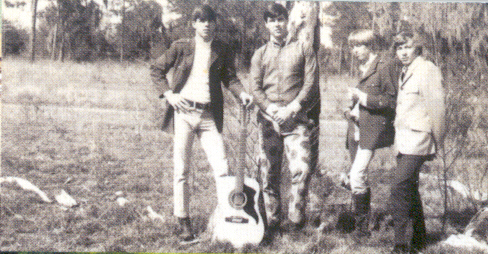
Tom Petty’s High School band: The Epics – Circa early 1967
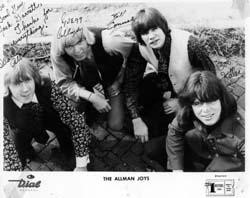
The Allman Joys – Circa early 1967 when they met Ken
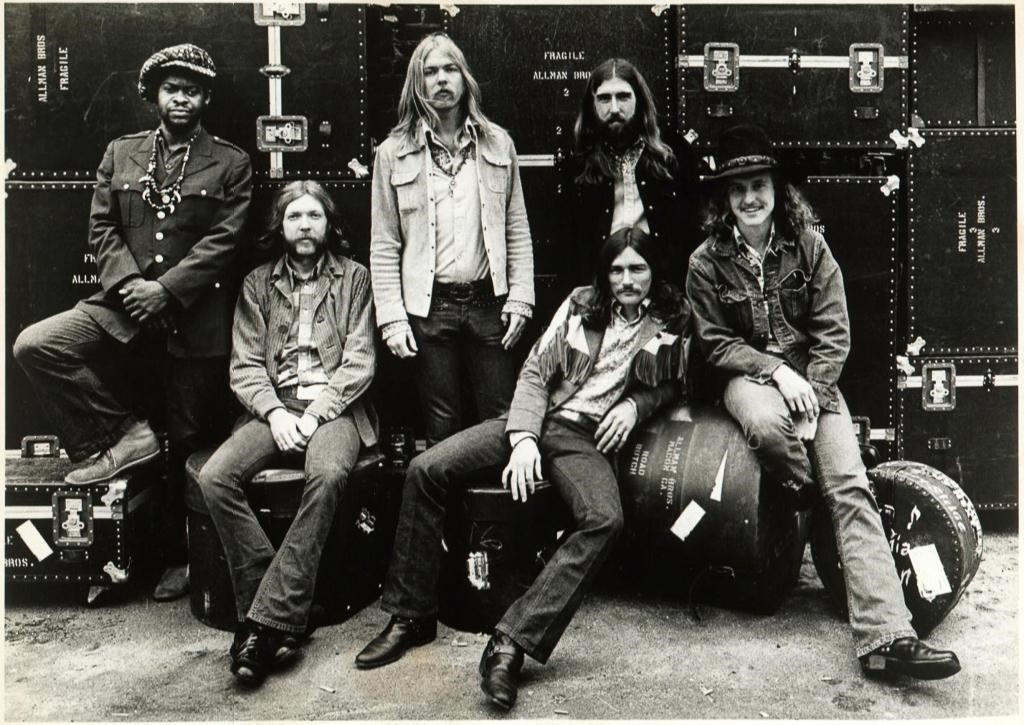
The Allman Brothers Band – Circa 1971
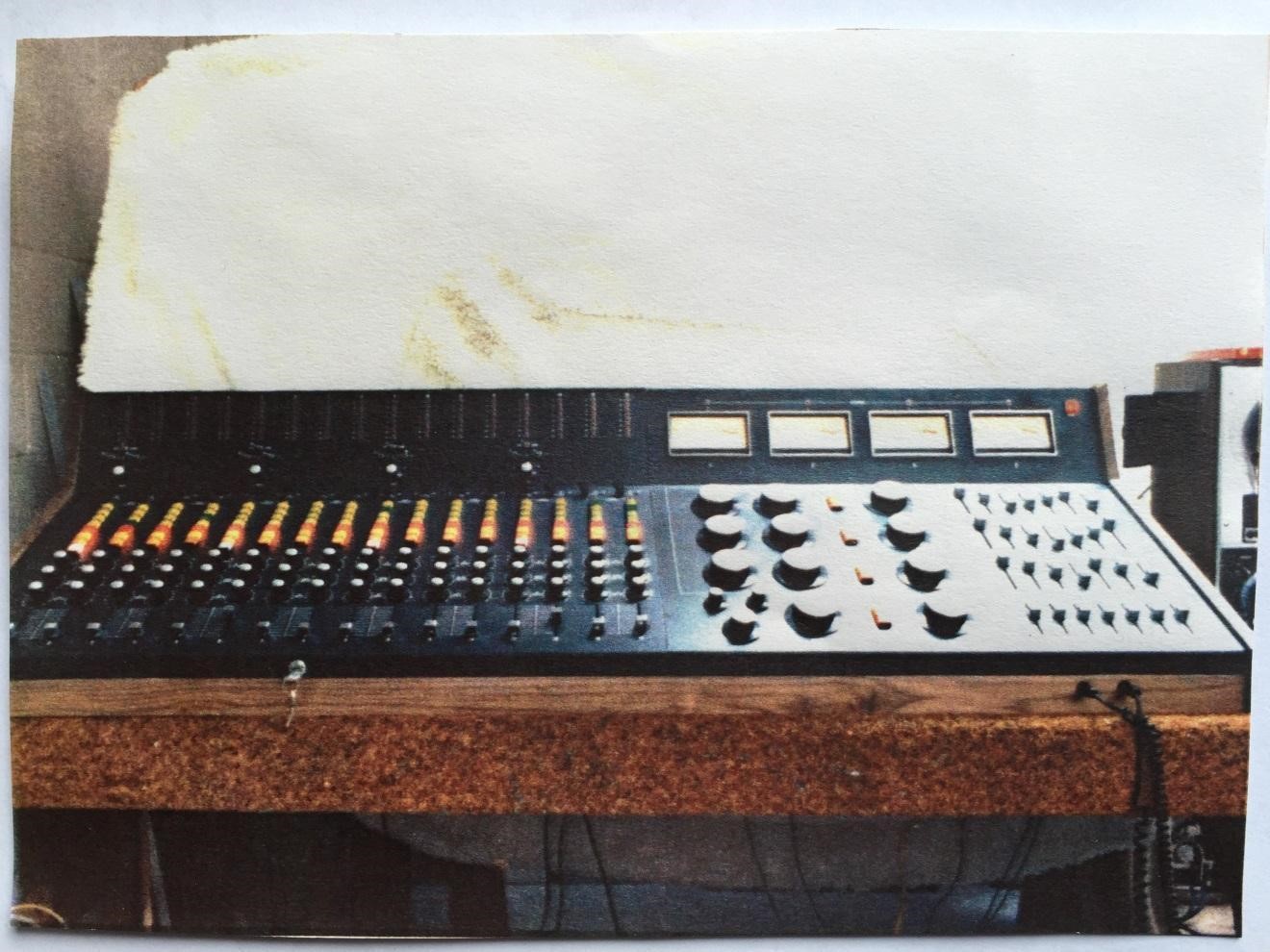
First recording studio mixing console made by AEA – circa 1969
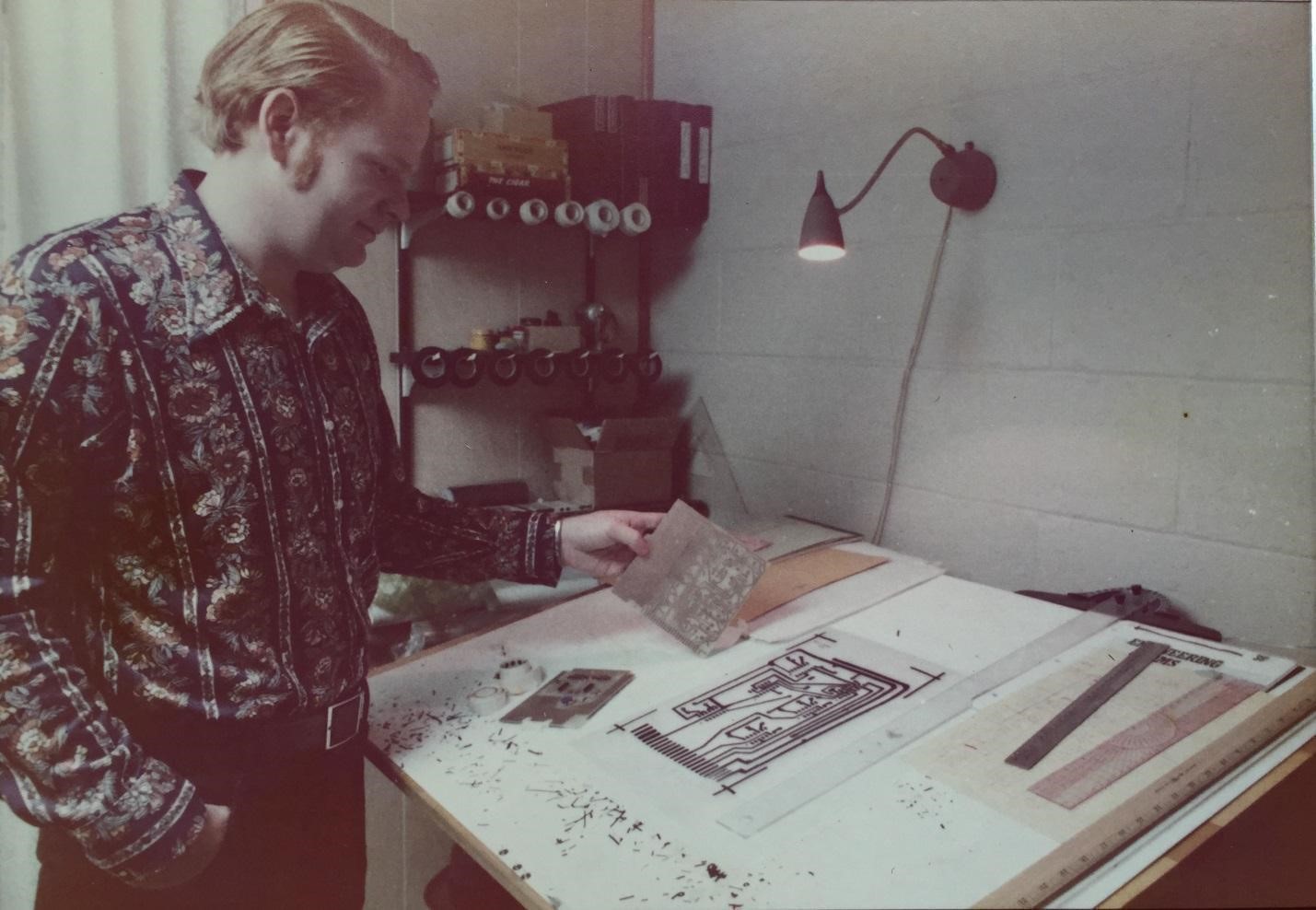
Ken laying out the printed circuit boards used in mixing consoles

Close-up of mixing console being tested prior to installation
Mixing Consoles
Building the Hit Factory…
After signing with Atlantic Records, Duane Allman turned to Ken for advice on making studio recordings. Ken decided to visit Criteria Studios in Miami where the band was booked to record the album. There he met the producer from Atlantic, Tom Dowd, and the studio’s owner Mack Emerman.
It turned out that Tom Dowd and Atlantic Records were planning to do a lot of recordings in Miami using the facilities at Criteria. But the studio’s recording equipment was a bit run-down and out of date. Mack, the owner, was in the middle of expanding the studio and looking for help in upgrading the recording systems. When Ken mentioned that he designed mixing consoles, Mack introduced him to his friend “Jeep” Harned, who had been building most of their equipment over the past 10 years.
Jeep had custom built much of the studio’s systems using 1950’s vacuum tube technology. They were in need of replacement and he had begun thinking about using the new “transistor” technology. After showing Jeep one of AEA’s solid-state mixing consoles, Ken was invited to work with Jeep’s team to make equipment for Criteria.
Jeep not only had the need for state-of-the art electronics, he was planning to start a company to manufacture recording studio equipment in response to the huge growth the recording industry was experiencing at that time. (Baby boomers were now college aged ‘rockers’)
For Ken it was a dream come true. Someone would pay him to perfect the new audio systems he had been working on as a sideline business for the past few years. And, it was back in his home town: Miami.
AEA became a consultant to Jeep’s company MCI. AEA worked with Jeep and his associate Dave Harrison to design the electronics for Criteria’s new mixing consoles. The timing was perfect. Jeep knew a lot about multi-track tape recorders and tube amplifiers, but wasn’t up to date on solid state technology. And while Dave knew a lot about using mixing consoles, he knew only a little about electronics.
That collaboration continued through the late 70’s with MCI becoming the world’s leading maker of recording studio equipment. Nearly all of the mixing consoles they produced were based on AEA designed electronics. The new technology from AEA allowed them to create more complex consoles with improved sound quality and lower cost. Together with Jeep and Dave’s innovations, the combination gave MCI the ammunition it needed to virtually dominate the recording industry for the next 10 years.
Criteria Studios
Turning vinyl into Gold and Platinum…
In 1970 Miami wasn’t known as a recording capital, and South Beach hadn’t been re-invented yet, but Atlantic Records and their soon-to-become-legendary producer Tom Dowd had a plan. They were spending a lot of time in South Florida entertaining artists on their corporate sport fishing yacht “The Big A,” and using Criteria for quick overdubs while the artists were there.
Atlantic soon realized that they could combine business and pleasure by focusing production in Miami. Criteria Studios became a very busy place after that, with just about every big name in the industry recording there at one time or another.
The first album recorded on the new mixing console was Eric Clapton’s “Layla.” It’s success drove Atlantic and others to start booking most of their artists at Criteria. And, of course, the artists loved being in Miami…
With the success of Layla the floodgates were opened. Just about every top rock band, including the Rolling Stones, the Bee Gees, The Eagles, Fleetwood Mac, Crosby Stills & Nash, Bob Dylan, Rod Stuart, Aretha Franklin and John Mellencamp recording there over the next few years. The Bee Gees and The Eagles booked months at a time to write and record at Criteria (and enjoy the sun in Miami).
Criteria recorded more Gold and Platinum hits during the 70’s than any other studio in history. Sales of albums made at Criteria in the 70’s have topped 200 million copies!
And of course, The Allman Brothers Band went on to become one of the top rock bands of the 70’s, recording their first two hit albums, “Idlewild South” and “Eat A Peach” at Criteria.
The systems AEA helped design broke new ground in the recording industry. MCI made game-changing advances in automated multi-track tape machines and large format recording consoles. During the 70’s MCI’s mixing boards were used by many of the world’s top recording studios, with the number of hit songs recorded on them reaching into the hundreds.
If you’ve ever listened to one of these albums you’ve listened to AEA

From the mic to the master tape, their music was recorded using electronics designed by AEA
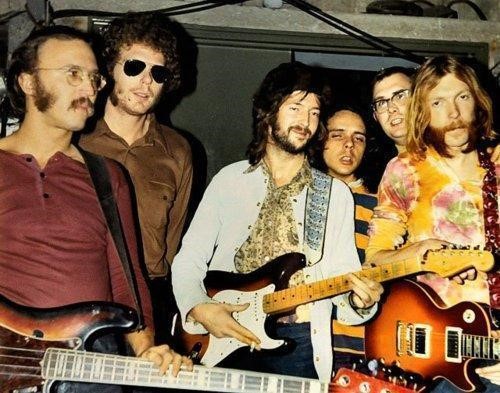
Duane with Deric and the Dominos during the recording of Layla at Criteria – August 1970
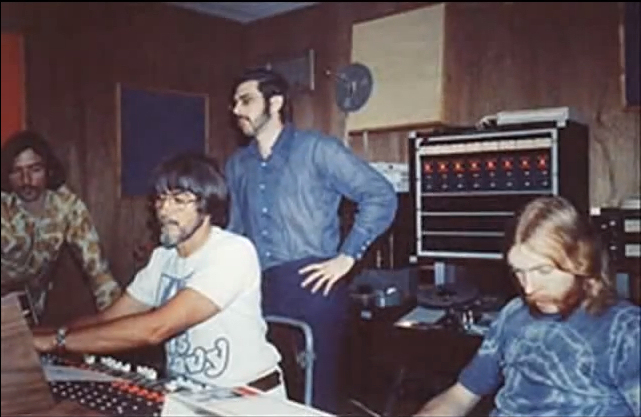
Tom Dowd and Duane Allman doing the final master mix-down of Layla on the new console
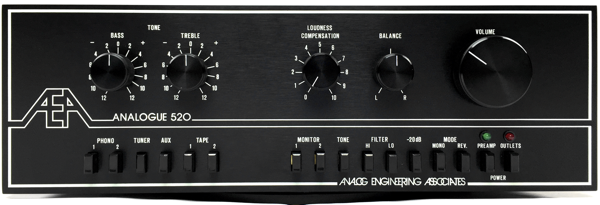
AEA 520 Preamp
From Hi-Fi to High Definition
And what happened to AEA…?
AEA went from building garage band sound systems, to designing mixing consoles used in the top recording studios, to building high-end consumer audio equipment. The story of how that last step happened also involves Criteria Studios– and Eric Clapton.
While installing the new electronics at Criteria, Eric Clapton arrived to record “Layla.” This was the first album to be recorded in the still-being-refurbished studio. Ken called his friend Duane Allman to tell him that Clapton was in the studio, and suggested he call Tom Dowd to see if he could drop by to meet Eric and the band. To everyone’s surprise, Eric had heard of Duane and was eager to invite him to the studio.
Duane and Eric hit it off right away. Duane ended up becoming a temporary member of “Derek and the Dominos.” He stayed and worked with the band on the album for weeks, playing his now famous guitar riffs on Layla. Duane’s energy, along with his new guitar style, fired up Clapton’s creative genius. And as you probably know, Layla went on to become his greatest hit.
Clapton and his band saw all the old tube gear being ripped out and replaced with new solid-state electronics. They got a bit “curious” about the results. Clapton mentioned to Ken that the very best Hi-Fi preamp is a “valve amp” (British for vacuum tube amp) made by Audio Research (the SP3). Ken insisted he could make something better with the same ‘cutting-edge’ solid-state technology being installed in the studio. Eric called Ken’s bluff, and from that challenge AEA’s first audiophile product was born: the 520 preamp.
Creating the 520 became a work of passion, designed to showcase the best of “modern technology.” However, meeting Clapton’s challenge turned out to be more difficult than initially thought. But after a lot of research, and live A/B listening tests with every “expert” they could find, AEA succeeded. In blind A/B tests no one could tell the difference between the Audio Research preamp and the AEA preamp.
Hearing that Clapton was back at Criteria recording a second album, Ken arranged to audition the production prototype for him at the now-famous 461 Ocean Boulevard house he was renting. After a comparison with his AR SP3 “valve” preamp, Clapton said he thought it was “indeed a bit better.” Eric congratulated Ken and agreed to buy the first production unit, which he did a few weeks later.
How we did it: The Secret Sauce
From Hi-Fi to High Definition…
One of the ‘secret’ breakthroughs AEA used to develop electronics for recording studios and high-end audio gear was the use of computers in measuring distortion. They developed the first system that could measure distortion in an audio circuit while music was actually playing through it.
No one had ever made such a test until AEA pioneered a new method made possible by another emerging technology: computers. It was thought impossible at that time to measure the distortion of an amplifier while it was playing music. But Ken, and a few of his fellow physics students from grad school who had joined him at AEA, were also involved in designing computer systems based on new technology that would eventually become what we know today as the PC.
Using custom modified “mini-computers” and their own analog-to-digital converter designs, AEA was able to simultaneously compare the input and output signals of an amplifier while playing music through it.
Up until that time testing of audio circuits had only been done by playing one (or at the most two) single tones through it at a constant volume. These tests are commonly known as Total Harmonic Distortion (THD) and Two-Tone Intermodulation Distortion (IMD) tests.
And… As AEA would learn, these tests are next to useless for measuring how an amplifier will actually sound in the real world with music playing through it. (You might also be surprised to know that these tone-based tests are still the industry standard to this today)
AEA’s new method would turn out to be a big technical advantage It provided the “secret sauce” needed to help MCI dominate the recording studio market, and for Ken to meet Eric Clapton’s challenge.
Simply put, they analyzed the difference between the input signal and the output signal. Any difference they found was caused by errors, or distortion, introduced by the amplifier while it was actually playing music.
No one else had equipment that could reveal what happens inside the amplifier’s circuits with real music passing through it. This information would help AEA engineers understand the “mystery” of why one amp could sound better than another, even if it’s THD and IMD tone-based test results were worse… Sometimes much worse.
AEA’s new test methods proved that the “industry standard” methods used to measure distortion just cannot describe how amplifiers will behave in the real world. Their engineering team were among the first to be armed with the knowledge of what really made one type of circuit sound better than another.
AEA’s revolutionary new computerized testing caused quite a stir when they publicly announced it a few years later in a technical paper presented at the 1976 International Consumer Electronics Show in Berlin.
The 520 preamp turned out to look so “elegant and high-tech” inside that many dealers began displaying them with the top cover removed. At their request AEA changed to building units with clear tops. Our sales brochures were also redesigned to show a life-size view of the inside of the preamp.
Well… that’s the story of how the 520 preamp came into being. Only about 700 were built. AEA went on to create the 515 moving-coil cartridge pre-preamp, and the world’s first 1,000 watt per channel stereo power amp: the AEA 620 (aka: The Brute).
The 620 was originally designed at the request of several rock bands, including The Grateful Dead and Carlos Santana, who were using AEA designed mixing consoles for outdoor concerts. They needed an amp that was powerful, reliable, and of course with exceptional sound qualities. AEA met that challenge with a massive 1000 watts of bullet proof power and silky smooth sound in each stereo channel. This feat was achieved by developing a revolutionary “Four-Quadrant Bridging Amplifier” design capable of more power than any other technology available at that time.
AEA also designed several other firsts in power amps. These included one of the first all FET power amps (the AEA 555) with a very warm and open “tube-like” sound. And the first “hybrid” module power amp (the AEA 610) designed in conjunction with the Burr Brown Company (now a division of Texas Instruments).
The company’s innovations attracted a lot of attention in those days. Saul Marantz and Avery Fisher, entrepreneurial ‘rock stars’ of the Golden Age of Hi-Fi, became company advisors. Their generous guidance was invaluable to the young ‘upstarts’ from AEA, as they set out to explore new possibilities in audio design by standing on the shoulders of those industry giants.
AEA was wound-down a few years later to allow its founders to concentrate on their new venture: designing computer graphics systems. This new venture became the Computer Graphics Corporation where they develop the first computer generated “special effects” we now see everyday on TV (that company was acquired by the AMPEX Corporation). Ken then went on to create one of the first web hosting companies which became the world’s largest for a time (now Verio), China’s first international ecommerce website, and the famous McAfee SECURE website security certification service. But that’s another story… You can learn more about Ken’s career launching 17 tech companies here: ![]()
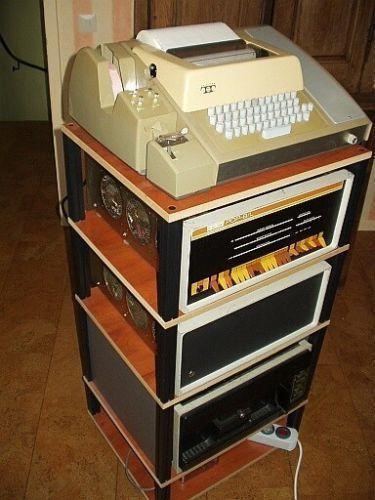
PDP-8 “Mini Computer” used to make analysis of
amplifier distortion while playing music – Circa 1970
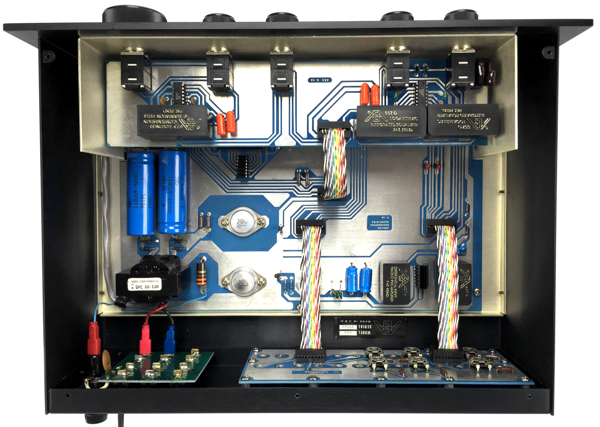
Inside of the AEA 520 Preamp

AEA 515 Moving-Coil Cartridge Preamp
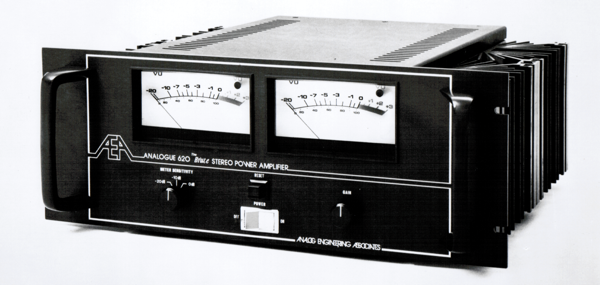
AEA 620 “The Brute” Power Amp
~ Revisit The Layla Sessions ~
Eric Clapton and Tom Dowd 30 Years Later…
Watch Tom re-mixing Layla in the original studio at Criteria
Hear Duane’s famous guitar riffs isolated on the mixing console
More about Criteria Studios HERE
